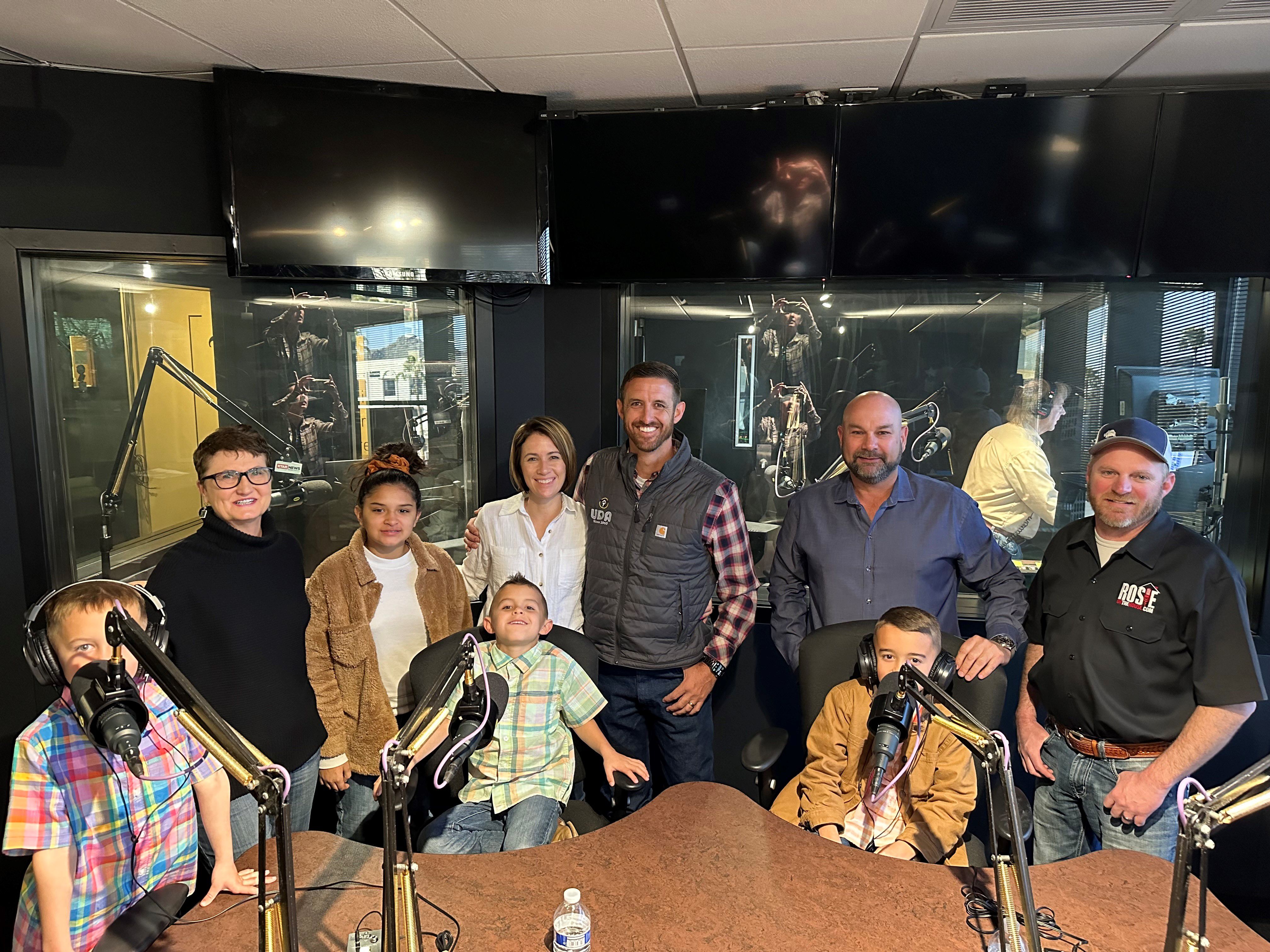Rosie on the House: Alfalfa and Dairy Farmers Explain Why They Need Each Other; Plus, Technologies to Enhance the Acre
Author
Published
3/5/2023
During the “Farm Fresh” Hour on Rosie on the House radio show this month, we plowed lots of ground relating to alfalfa and dairy farmers and innovations in agriculture technology. In-studio farmer guests were Arie Van Hofwegen (our dairy farmer) of Paloma Dairy and Wade Accomazzo (our alfalfa farmer) of Accomazzo Company. Additionally, Robyn Lawson, Arizona farm kid, and agriculture technology expert called in at the midway point during this very enlightening hour to help us understand farm and ranch technologies that are helping improve our farm and ranch practices.
What We Learned
First up, if we want a robust local food supply chain, we must have a dairy farmer and an alfalfa farmer. The two cannot function without each other and help ensure Arizona’s local food sources are clipping along. The full radio discussion is below. Both farmers also talked about the technological innovations that have helped their businesses improve.
But what about overall technological innovations in agriculture? “A grower has about 35 to 45 seasons in their career,” says Robyn Lawson, an industry expert with 10 years in the agriculture technology space for various organizations. “Some technologies take three to four years to fully integrate into the farm. Growers need technology to work for them, and they need it to work fast because they don't have 10% of their career to donate to figuring out technology. Ultimately technologies used on the farm should elevate and maximize your every acre.”
Relating to crops, Lawson pointed out that every plant has a life cycle, and within that life cycle, it has common requirements in order to thrive: nutrition, protection, and irrigation. Technologies should serve and elevate one of those three common plant requirements. Plus, every grower has requirements for production: tending/executing plant requirements, managing regulatory requirements, and maintaining best business practices. Technologies should make each one of those grower requirements an easily executed task.
“All of this is easier said than done,” Lawson went on to explain. “How do we pick the right technology? You pick the right technology when you focus on the requirement that has the most impact on your farm business.”
Lawson suggests farmers and ranchers ask the following questions:
- Where do you start?
- What are the top few items that you need the most support on your operation? Is it labor? Is it irrigation? Is it plant protection materials?
Lawson says, “The technology you select should address a direct problem that you have on the farm or ranch, and provide direction for a solution, and that solution should be something that you can take actual action on for each one of your acres.”

We made this Rosie on the House broadcast a family affair.
General Trends
Lawson further explains, “One sensor and one software aren’t going to cut it. It would be like having a body with no organs, or organs with no body, you need both to hold everything together and function properly.”
Technology Points Lawson Emphasizes
- Utilize sensors that collect data from different perspectives. For example, for irrigation management, utilize in-ground soil moisture monitoring probes to see how your water is moving through the soil, and multispectral imagery to see how your plants are absorbing the water. Use those data sets to identify your healthiest growth in the field and make management decisions to elevate lower-performing areas to meet your high-performing area. that might mean different irrigation schedules: time, psi, amount and more. And/or it might mean a fertigation program if that is an option on your farm.
- Software is where you get to see the power of what that sensor can do for your acre. Keeping this point in mind can help you pick the right software.
- No one has “won” in the farm management software game. We continue to see the same players trying to expand their software to “be more” for growers, but the login fatigue remains. So, what is the answer here? Map out your top three needs for farm management software.
- Is it regulatory, for example, 1080 records, records for food safety programs, then focus on software that does it well.
- That is the software where you will spend most of your time.
Technologies to Watch
Equipment
Robotics/Autonomous:
- Sabanto: https://sabantoag.com/
- GUSS: https://gussag.com/
Application Tracking/Efficiency
- FieldIn: https://fieldin.com/
- Features continue to evolve with Trimble, Raven, John Deere, Case
Sensors
Irrigation Water Management
- Soil Sensor: Soiltech Wireless https://www.soiltechwireless.com/
For Plant Health (nutrition + crop protection)
- Multispectral Imagery for nutrition or crop protection applications (can be used for irrigation management as well)
- Working with your local crop retailer for their imagery provider of choice - Satellite, Aerial, purchasing your own sensors
Soil Scanning
- Soil Optix: https://soiloptix.com/
Software
- Taking actions on your crops faster through some sensor data predictive models - Crop Insights from RegrowAg: https://www.regrow.ag/
- Maximizing your acre with sensors with Innov8 Ag: https://www.innov8.ag/
- All data in one place: Microsoft Azure FarmBeats: https://learn.microsoft.com/en-us/azure/industry/agriculture/overview-azure-farmbeats

With the Farm Fresh Hour a wrap, we gathered to take photos.
Technology has a vast meaning across all of agriculture. As Paloma Dairy’s Arie said, it’s overwhelming to consider what tools are available to use on the farm, and even more overwhelming on picking the right one for your operation. “Installing drip irrigation is using technology on the farm,” explains Lawson. “Using a type of software to geographically reference your soil sample location, and maintain soil sample data, so you can go to the same spot for each sample year over year and track soil improvements is a technology used to enhance your acre. When the Hohokam built canal systems in 1450 B.C. that was a technological advancement to enhance the acre. All this to say, Arizona has great farmers that have been and continue to use technology tools to maximize the acre.”
The economic point was addressed by alfalfa farmer Wade Accomazzo during the “Farm Fresh” broadcast. To his point, some technologies for the farm, like some computers in the early years of consumer release, are not affordable. However, some technologies are economically accessible early in their product life cycles, and others become affordable and accessible to a wider share of our grower market in their product life cycle. “I like to think of each part of a farm business linked to a share of the farmer’s wallet,” suggests Lawson. “A farmer has so much to spend for equipment, fertilizer, crop protection, irrigation, labor, and more. Technology should not be separate but instead woven into the share of the farmer’s wallet for the business items mentioned earlier. Why? Because using a sensor to evaluate opportunities for a new nutrition program for your crop is not just a technology, it becomes a nutrition-enhancing opportunity resulting in maximizing your acre for nutritional value with the goal of strong crop yield.”
By listening to the broadcast embedded below, you’ll get the full scope of this technology discussion. The “Farm Fresh” hour was a wealth of insights and knowledge and perhaps a way to help you select the technology you need to make your business better.